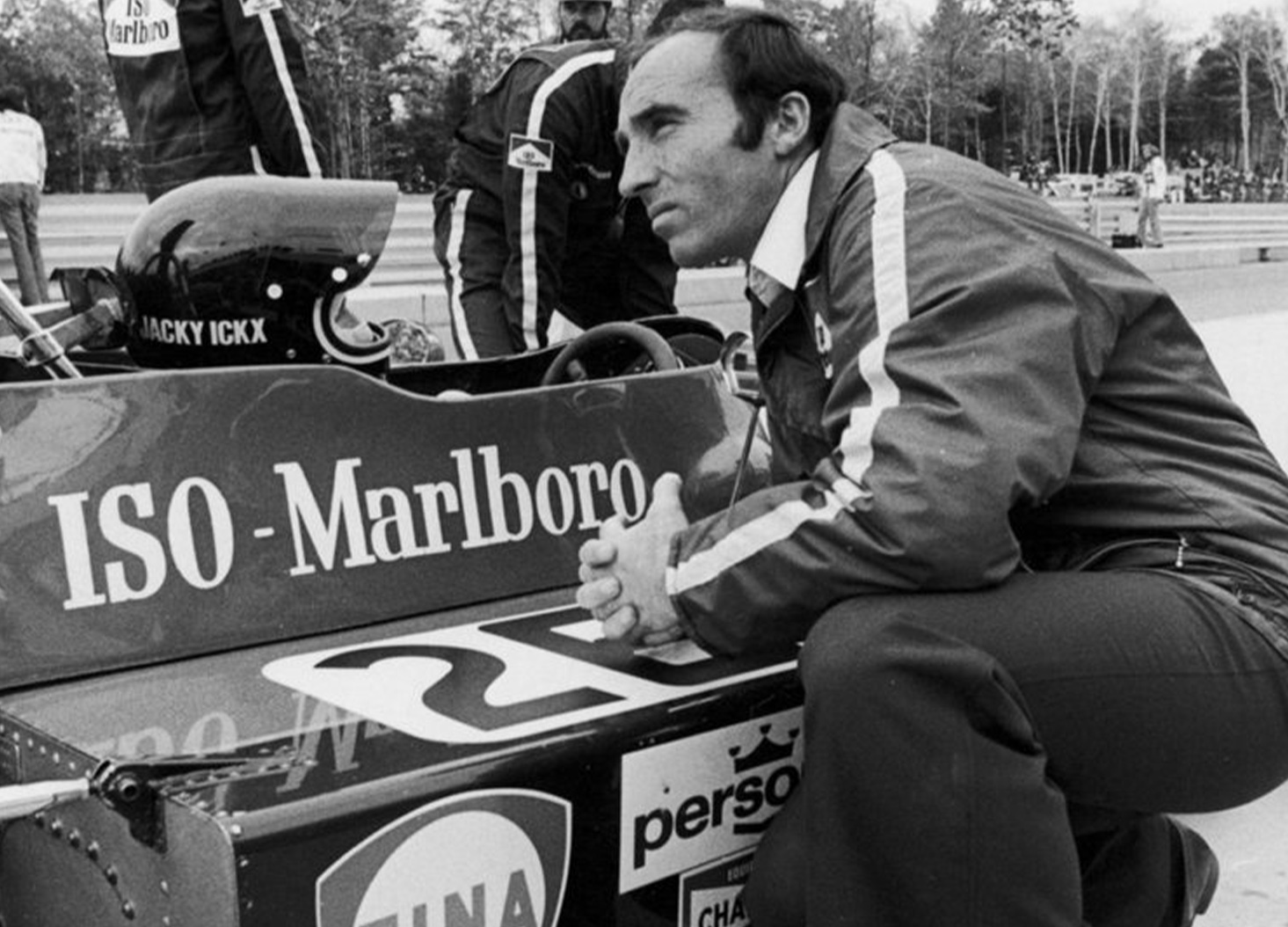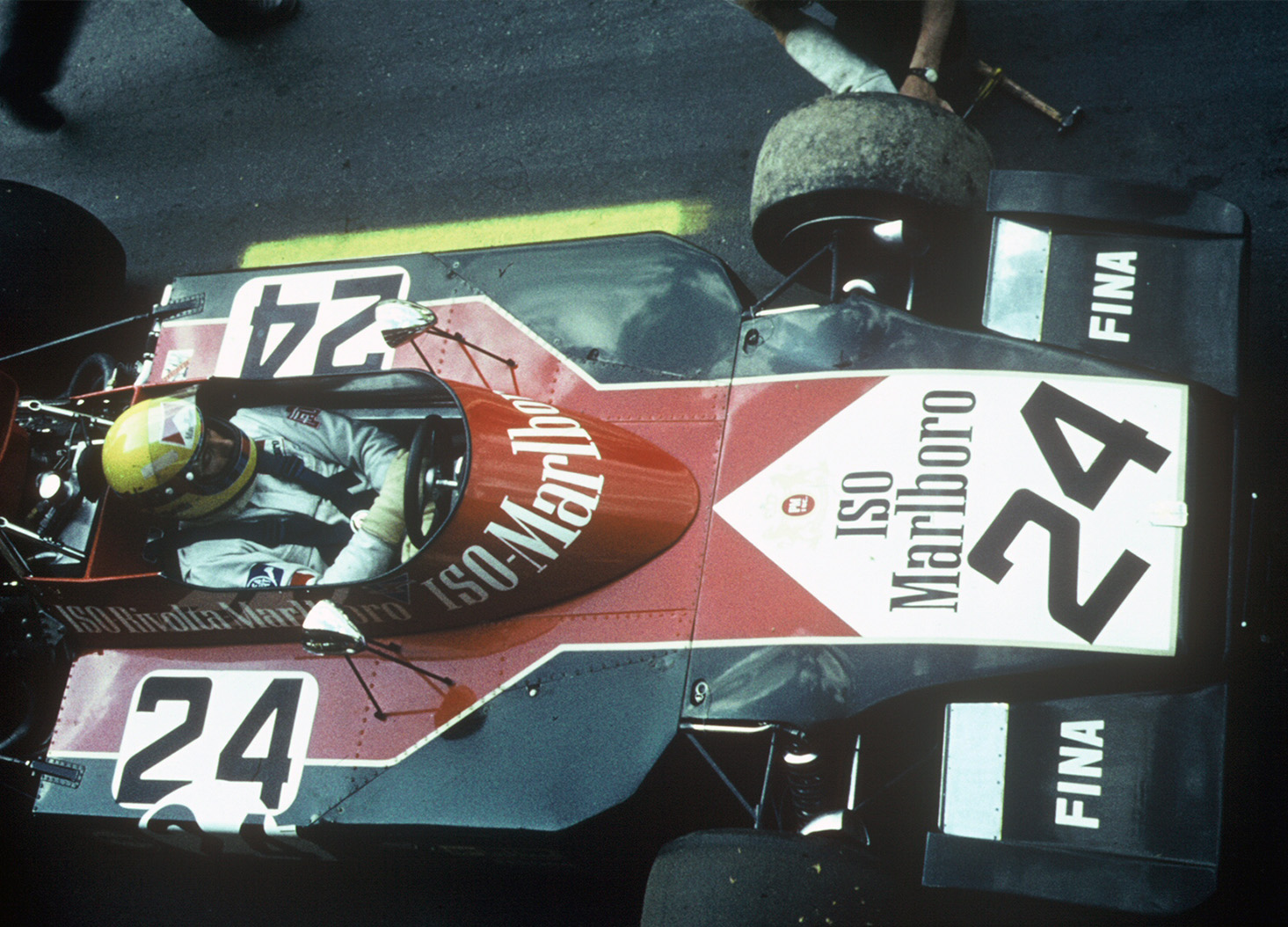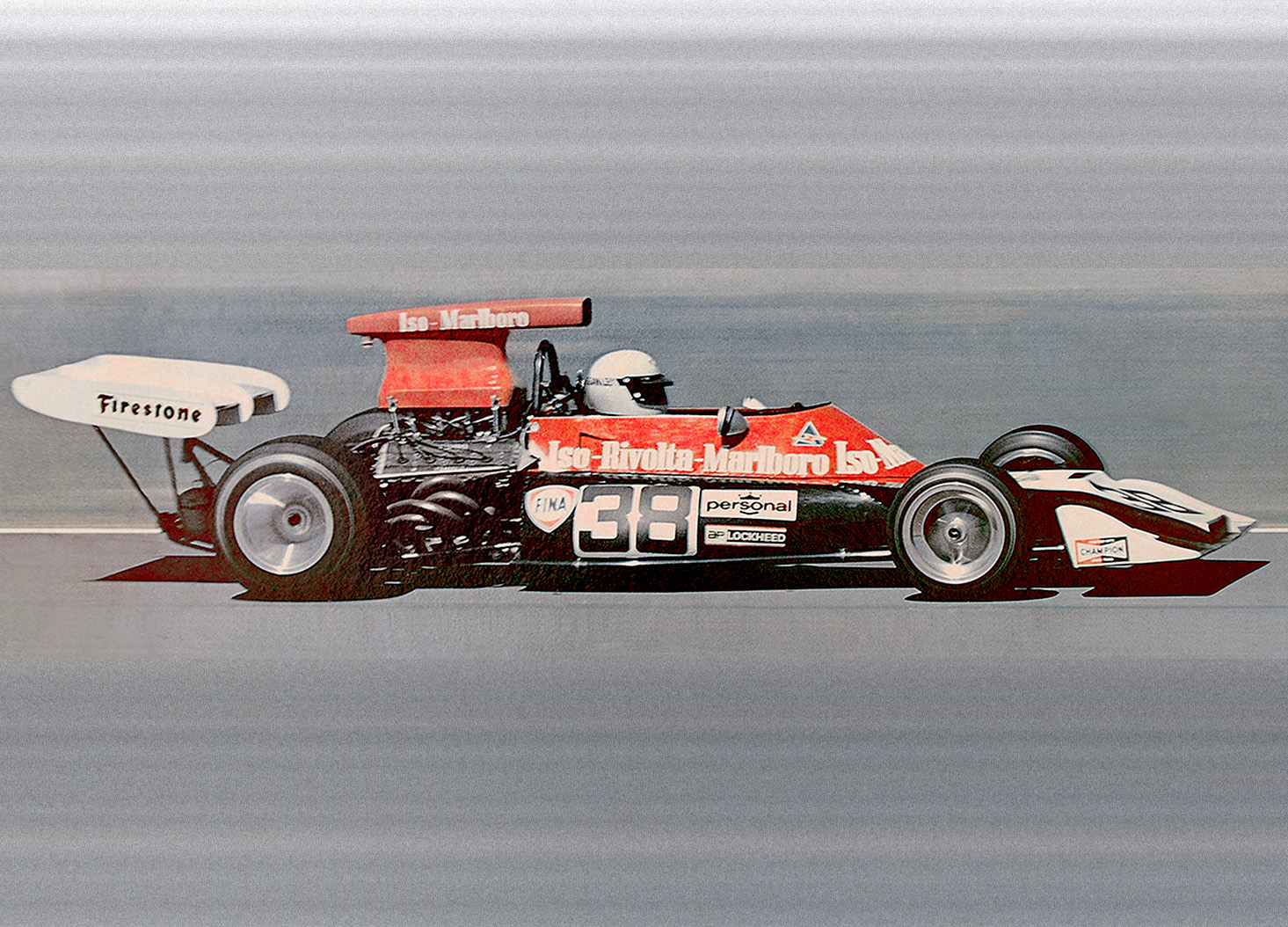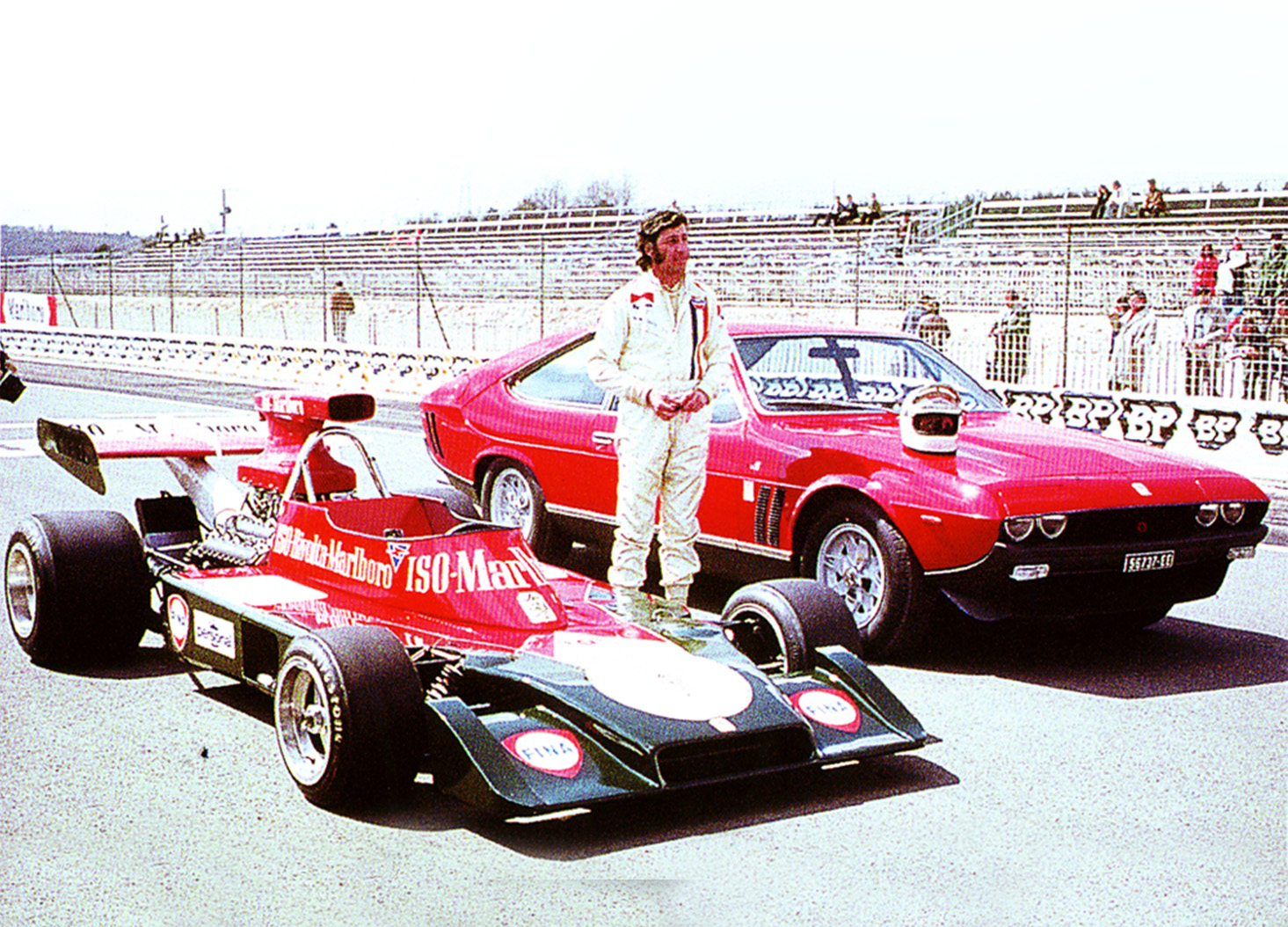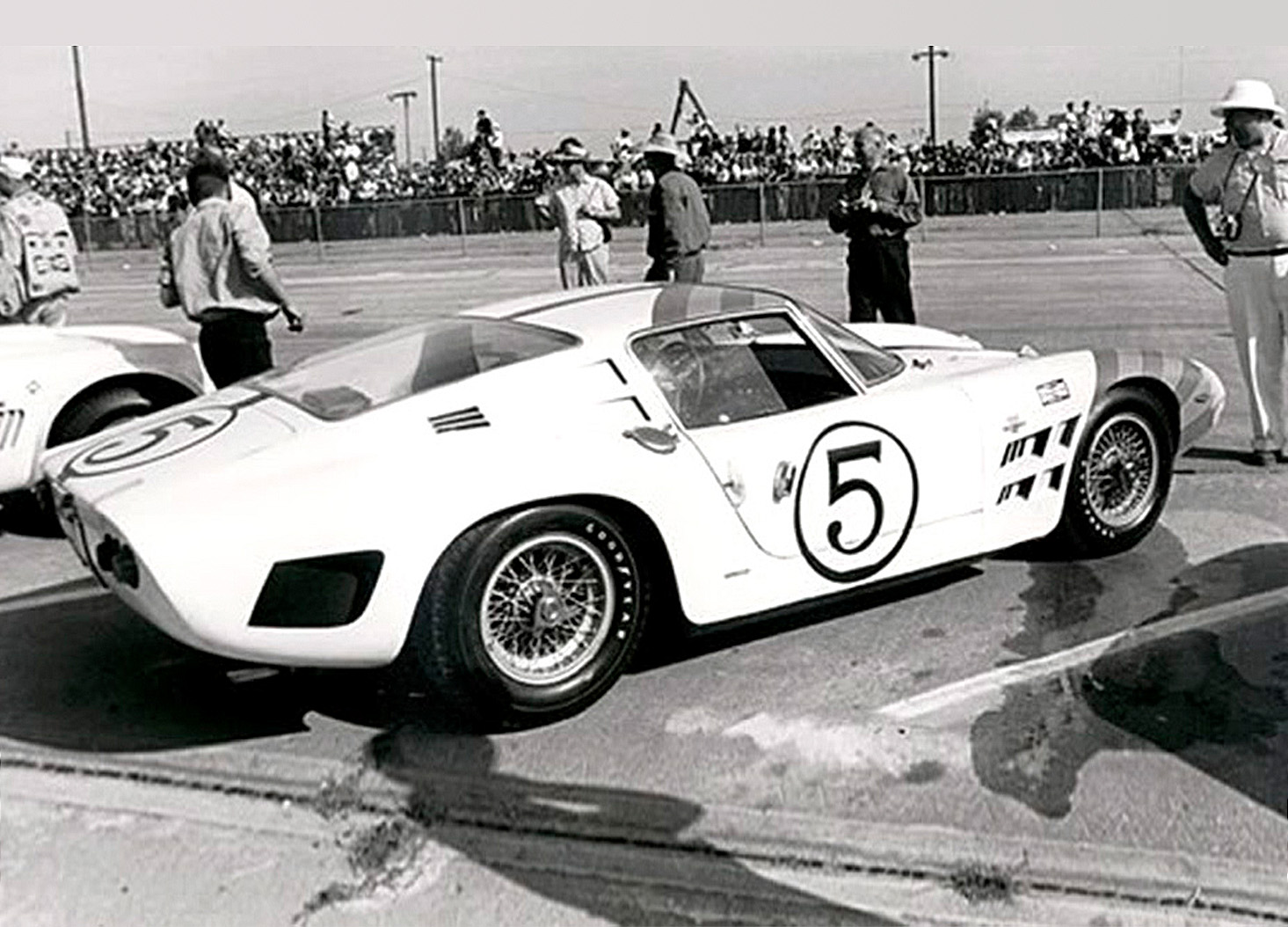The Isetta also enjoyed incredible success at Italy's famed 1000-mile Mille Miglia race. In terms of raw speed, the Isetta couldn’t possibly compete against the more powerful cars, but the organizers leveled the playing field with an "index of performance." The Isetta excelled here, winning the trophy from 1953 to 1955.
ISO Rivolta returned to competition in the 1960s to promote its GT cars. The most famous racer was the A3 Corsa. Its coachwork was much more radical than its street counterparts, with an engine set so far back in the bay that it was a true front mid-engine design. This model participated in races all over the world—including Sebring, Reims, Monthlery, Monza, Spa and the Austrian Grand Prix, among others—and won in its class at Le Mans in 1964 and 1965. In 1968 a ISO Rivolta GT raced in the GT class at Le Mans because its production had reached the number required to enter that class.
In the early 1970s Piero Rivolta joined forces with Frank Williams and Marlboro to put together a Formula One racing team called ISO-Marlboro. Despite a limited budget, especially for the drivers, the team completed two full seasons on the Formula One circuit with good results. Subsequently, when Piero sold the company, Frank Williams found a partner in Kuwait and enjoyed a series of great successes with these cars.
The Formula One vehicles were using Ford engines, so during this period ISO Rivolta changed the engine in all their production cars from GM to Ford, thereby strengthening its relations with Ford and also demonstrating consistency
among the racing and Gran Turismo cars.
GM and Ford engines—two excellent American hearts for these vehicles.


